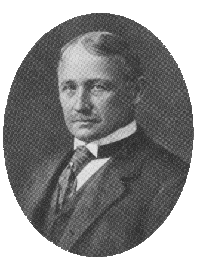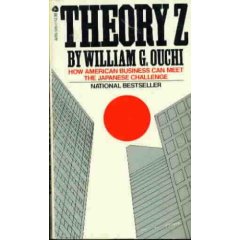|
Links |
|
Links |
|||
|
|
- Biography & Major Works | ||||
|
|
INTRO: TAYLOR DEVELOPED THE IDEA THAT WE CAN STUDY THE PROCESS OF HOW WORK IS DONE IN ORDER TO LEARN TO DO IT MORE EFFICIENTLY |
|
|||
| Frederick Taylor is considered to be the father of such fields as work design, ergonomic, bio-mechanical engineering, & human resource mgt | |||||
| Taylor developed the field of work process engineering in the 1800s | |||||
| Scientific management refers to the application of scientific principles to the operation of a business or other large organization | |||||
|
|
The field of work process engineering that Taylor developed was called Scientific Management, & was sometimes called Taylorism |
|
|||
| Scientific mgt involves several steps, including the:
a. observation of the tasks performed by the wkrs b. analysis of their data to discover ways for wkrs to become more efficient c. provision of guidance & incentives to wkrs to be more efficient |
|||||
|
|
Scientific management refers to the application of scientific principles to the operation of a business or other large organization |
|
|||
| Mgrs. & engineers recognized that they needed to control/coordinate mass-production | |||||
| Work process engineers needed to get the knowledge from the best workers & teach it to the other workers | |||||
| To acquire the knowledge of the workers, Taylor developed Time & Motion Studies | |||||
| In Time & Motion Studies an efficiency expert clocks each step in a job & looks for ways to reduce the time needed to do the job |
|
||||
| In Taylor's words, "The managers assume ... the burden of gathering together all of the traditional knowledge which in the past has been possessed by the workmen & then of classifying, tabulating, & reducing this knowledge to rules laws, & formulae... All possible brain work should be removed from the shop & centered in the planning or laying out department..." |
|
||||
|
|
The image of the researcher, in a white lab coat, w/ a clip board & stop watch observing hard working blue collar men in the 1800s & early 1900s is one that was disturbing to most workers, including Labor leaders |
|
|||
|
|
THE PRINCIPLES OF SCIENTIFIC MGT INCLUDE: SCIENTIFICALLY STUDY TASKS, TRAIN WKRS, ENSURE QUAL PRACTICES ARE FOLLOWED, & EQUALLY DIVIDE THE LABOR |
|
|||
| Taylor's scientific management consisted of four principles where mgrs: | |||||
| a. replace rule of thumb wk methods w/ methods based on a scientific study of the tasks | |||||
| b. scientifically select, train, & develop each wkr rather than passively leaving them to train themselves | |||||
| c. cooperate w/ the wkrs to ensure that the scientifically developed methods are being followed | |||||
| d. divide wk nearly equally btwn mgrs & wkrs, so that the mgrs apply scientific mgt principles to planning the work & the wkrs actually perform the tasks | |||||
| THE TENETS OF SCIENTIFIC MGT SEEK TO RATIONALIZE THE MANNER IN WHICH WORK IS DONE BY BREAKING TASKS & SKILLS DOWN INTO THEIR COMPONENT PARTS IN ORDER TO TRAIN WKRS TO PERFORM OPTIMALLY |
|
||||
| The tenets of Scientific Mgt include: | |||||
| 1. that there is one best way to do a job | |||||
| In contrast to the theory of one best way to do a job, the Japanese embrace the theory of continuous improvement, believing that there is always room for improvement | |||||
| 2. pick the best workers | |||||
| 3. observe them | |||||
| 4. appropriate their knowledge & skills | |||||
| 5. use the best workers' knowledge & skills to devise the most efficient method | |||||
| 6. standardize the most efficient method | |||||
| 7. train all workers in the most efficient method | |||||
| 8. the belief that the piece rate would eliminate soldiering | |||||
| 9. profit sharing would eliminate soldiering & build team work | |||||
|
|
TAYLOR WAS A INDUSTRIAL ENGINEER VISIONARY WHO WANTED A BETTER WORKPLACE FOR THE WKRS, BUT HIS VISION WAS CORRUPTED AS MANY CORPS USED HIS PRINCIPLES ONLY TO EXPLOIT WKRS, & NOT FAIRLY REWARD THEM |
|
|||
| Taylor's methods were well ahead of his time | |||||
| In one study, Taylor & his engineers examined the different ways of holding cutting tools on metal lathes | |||||
| In one study, Taylor & his engineers examined the way gangs of men would load 90 lbs. ingots of pig iron on a railroad flat car | |||||
| In one study, Taylor & his engineers examined the way gangs of men would dig | |||||
|
|
SOLDIERING IS THE PRACTICE BY WORKERS OF INTENTIONALLY RESTRICTING OUTPUT, E.G. SANDBAGGING OR SLACKING | ||||
| Taylor was concerned w/ performing work processes in the one best way as well as eliminating any soldiering | |||||
| Soldiering occurred when men worked well below their capacity: "The greatest part of systematic soldiering... is done by the men w/ the deliberate object of keeping their employers ignorant of how fast work can be done. So universal is soldiering for this purpose, that hardly a competent workman can be found in a large establishment... who does not devote a considerable part of his time to studying just how slowly he can work & still convince his employers that he is going at a good pace." | |||||
| Taylor fired anyone who he believed was soldiering, replaced them w/ less skilled workers, trained the replacement workers w/ the old workers' knowledge & skills | |||||
| Taylor's replacement workers would be paid a piece rate & profit sharing | |||||
| Taylor's replacement workers could generally be paid less than the old skilled workers | |||||
|
|
CRITICS OF SCI MGT ACCUSE IT OF THE 'APPROPRIATION' OF KNOWLEDGE & CONTROL OF THE WORKPLACE |
|
|||
|
|
One of the impacts of Scientific Mgt is that the control of the knowledge of the work process which had previously only been available to each worker, craft, guild, or trade union, now became available to mgt. & its Scientific Mgt. engineers | ||||
| Scientific Mgt. appropriated knowledge, & economically damaged the worker, craft, guild, or trade union | |||||
| Through the development of Scientific Mgt, mgt & engineers controlled the pace of work | |||||
| Following this, machines & assembly lines controlled the pace of work | |||||
| Scientific mgt is the beginning of the modern process of industrial engineering, HRM, etc. | |||||
|
|
SCI MGT'S CONTROL OF THE WORKER SOMETIMES WENT BEYOND WK TASKS TO CONTROL OF THE WKR'S ENTIRE LIFE, INCLUDING 'MORALITY' |
|
|||
| Taylor, like Henry Ford & many other industrialists embraced the ideology of the time which held that control of the workplace went far beyond what occurred at work | |||||
| Taylor, Ford, & others also believed in developing the moral character of the workforce & thus they punished or fired people for "immoral activity" & instituted citizenship & morality courses that the workers & their families had to attend | |||||
| Another part of the industrialist ideology which Taylor, Ford, & others embraced was that | |||||
| - workers responds only to money | |||||
| - workers want to be told what to do | |||||
| - workers are happiest when they are doing simple work | |||||
| Taylor, Ford & others embraced many of the tenets of Social Darwinism | |||||

Frederick Winslow Taylor 1856 - 1915 b. Germantown, PA Taylor was an Am engineer & efficiency expert. Born on March 20, 1865, into an upper class liberal Philadelphia family. His father, a Princeton graduate & lawyer, made enough money from mortgages & did not have to keep a regular job. His mother was a spirited abolitionist & feminist who was said to have run an underground railroad station for runaway slaves. Both parents were Quakers & believed in high thinking & plain living. Parental authority was not questioned & children were seen & not heard in the Taylor family. Family members referred to each other as "thee" & "thou". At an early age Taylor learned self-control & his Quaker upbringing helped him to avoid conflicts w/ his peers & to resolve disagreements among them. Joined Midvale Steel Works in Philly in 1878 as a worker. After his apprenticeship at the hydraulic works plant, he became a common laborer at the Midvale Steel Company. He started as shop clerk & quickly progressed to machinist, foreman, maintenance foreman, & chief draftsman. W/in six years he advanced to research director, then chief engineer. While working there he introduced piece work in the factory. His goal was to find the most efficient way to perform specific tasks. He closely watched how work was done & would then measure the quantity produced (Kanigel 44). Left in 1890 as chief engineer. Taylor became an independent consulting engineer, focusing on efficiency.
His most important client became Bethlehem Iron Company. In his last
years Frederick felt misunderstood by quick fix managers & zealous
unionists, & wronged by consultant imitators. His energy was sapped
by the constant attention he paid to his wife's severe illnesses. While
on a speaking tour in the Midwest, in 1915, he contracted influenza. He
was admitted to a hospital in Philadelphia & celebrated his fifty ninth
birthday there. He died the next day.
|
 |
||||
Taylor, Frederich W. The Principles of Scientific Management.
1911. NY: Harper & Row.
|
|||||
